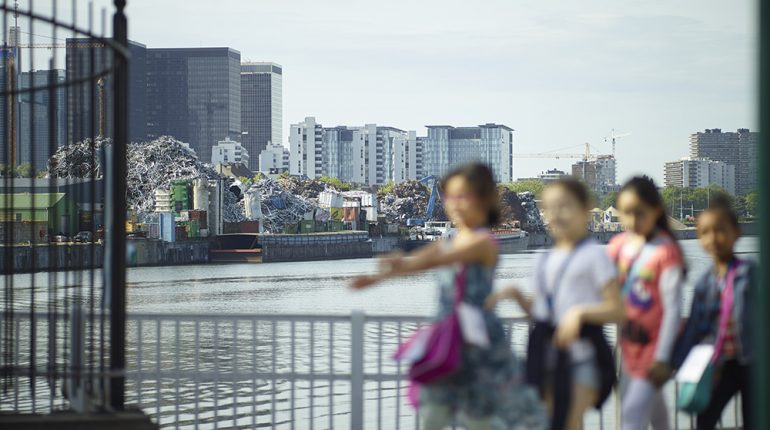The Canal Zone is a strategic area for the Brussels Capital Region, and in full transition. In 2012, French urban planner Alexandre Chemetoff was appointed to draw up a vision for the entire Canal Zone area. The objectives can be summarised as follows:
- To keep economic activity in the city and bring the places where people live and work closer together
- To create housing that reflects the needs of population growth and the budgets of all household types
- To create pleasant, unifying public spaces by taking full advantage of the Canal axis, the uncovering of the Senne and the Canal’s crossing-points as linkages between different districts
- To create the conditions for a city that is open (to different functions, a diverse population, etc.) in an area that has been earmarked to receive new populations
In 2015, the government of the Brussels-Capital Region launched the implementation of the Canal Plan and foresees 10 years to realize the ambitions for the Canal Plan. An operational perimeter of 700 hectares has been defined, of which 300 hectares are in public ownership. To give further direction to the implementation of the Canal Plan, a special team bringing together various Brussels public bodies has been set up. This team works according to a transversal method based on co-construction and project urbanism. It consists of :
- The BMA, acting as guarantor of the overall vision of the Canal Plan and playing an advisory role to ensure a high level of architectural and urban quality
- The BMA’s research by design unit, which translates the ambitions of the Canal Plan into designs and contributes to the development of project plans
- perspective.brussels, the Brussels Planning Agency, responsible for planning, detailed elaboration and the monitoring of the regulatory framework
- urban.brussels, responsible for drawing up all regional planning applications within the Canal Plan area, whose involvement extends from the period prior to the submission of applications through until the issuance of urban planning permission
- The Urban Development Corporation (SAU-MSI). The SAU-MSI plays both a coordinatory role and, in some cases, an operational role
The Canal Plan is a collective project. The municipalities and all the regional services concerned are involved in the definition of all projects.
For more information on the Canal Plan >>> www.canal.brussels
